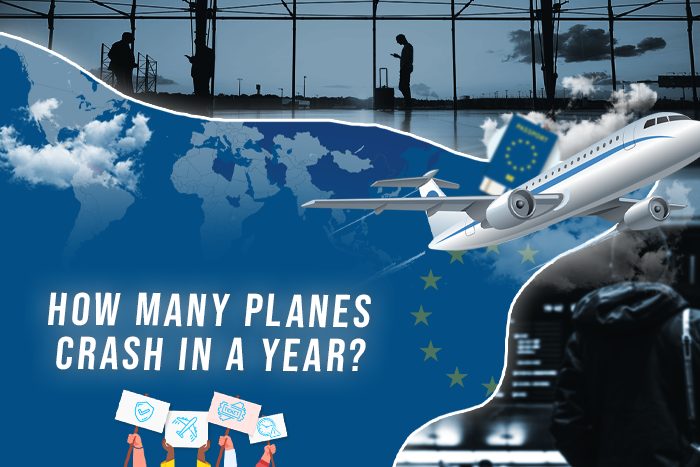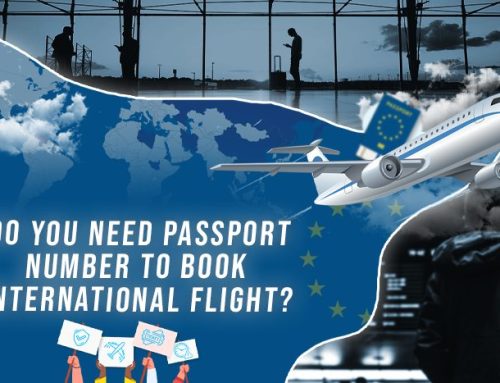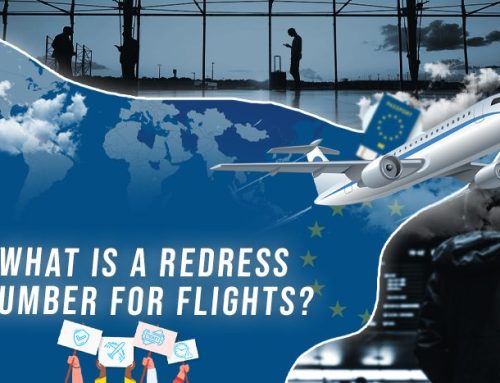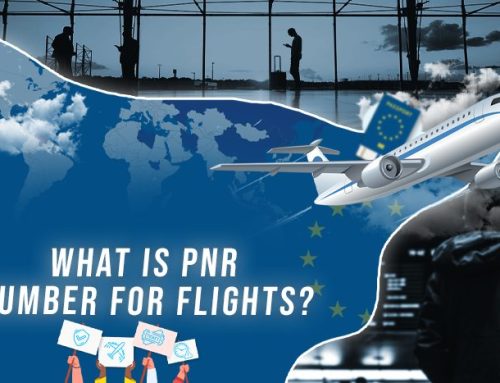It’s said that flying is the safest way to travel, especially if you’re flying commercially. Most plane crashes in any given year are with smaller, privately-owned planes. These planes have less sophisticated technologies, including in-flight programs that help pilots navigate various weather conditions easily.
Just because it’s the safest way to fly doesn’t mean there still aren’t accidents. So how many planes crash in a year? The number of plane crashes varies yearly, but roughly, assume that there are between 70-90 crashes per year. Keep in mind that includes all types of crashes, including commercial planes and privately-owned ones worldwide.
In 2021, there were about 176 deaths due to plane crashes, which gives you pretty good odds when you consider there were 7.87 billion people in the world. Ultimately, the risk of dying in a plane crash is about 1 in 11 million. Compared to the risk of dying in a car crash – 1 in 5,000 – those odds seem to be in your favor.
Key Takeaways
- Flying is still considered to be the safest way to travel, but accidents can happen. Roughly, there are between 70-90 plane crashes per year worldwide, including both commercial planes and privately-owned ones.
- Human error, mechanical failure, and poor weather conditions are some of the most common factors that contribute to plane crashes. Proper maintenance and safety measures, as well as training for pilots and maintenance personnel, can help prevent these accidents.
- While the risk of dying in a plane crash is relatively low, survivors may suffer from physical and emotional injuries that can have long-lasting effects. Passengers should pay attention to safety tips and take steps to increase their chances of surviving a crash, such as sitting near the emergency exit and putting on an oxygen mask.
- Commercial flights are stricter about following pre-flight inspections because they will be liable for any issues, whereas smaller planes may skip these important steps or take them less seriously.
- The first three minutes after take-off are said to be the most dangerous, and if the plane crash is not a complete wreckage, it is possible to survive a plane crash.
What Causes Plane Crashes?
Several different factors can cause plane crashes, and one of the most common reasons is human error. Especially in a smaller aircraft, it’s easy to make a simple mistake that could cost you and your passengers your lives. This can happen during take-off and landing, especially when the pilot has to make gradual transitions to cruising altitudes. These are compounded with difficult weather conditions, including snow, rain, and high wind. Small plane crashes account for 80% or more of plane crashes and deaths in the EU.
Mechanical error and defective parts can be another reason for plane crashes, which is why it’s important to keep up with routine maintenance and keep pristine records. Commercial flights are stricter about following pre-flight inspections because they will be liable for any issues. Smaller planes may skip these important steps or take them less seriously. Doing so could overlook issues that could cause the aircraft to malfunction while in flight.
Poor weather conditions contribute to plane crashes for commercial planes and small jets alike. Heavy rain, snow, hail, wind, and lightning can all cause issues for a plane. Hail has been known to crack windshields and cause other surface and structural damage to the plane itself. Lightning strikes can cause electrical malfunctions, causing a total loss of power in serious cases. Wind can come in downbursts or microbursts, causing planes to decrease altitude quickly or become pushed off course. Turbulence, too, can be very disconcerting to those on airplanes but can cause damage to the aircraft itself.
Many plane crashes can be avoided with proper care and attention to the weather and other safety conditions.
Can You Survive a Plane Crash?
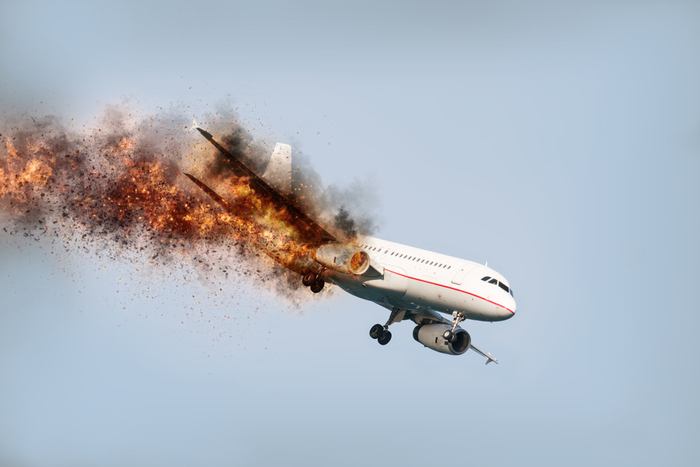
If the plane crash is not a complete wreckage, it is possible to survive a plane crash. Pay attention to the safety tips during your flight as they could save your life. You have a limited amount of time – perhaps just 90 seconds – to get out of a plane crash to save your life.
If you survived the crash, your biggest focus should be getting away from the wreckage, which is likely to become engulfed in flames. The bigger the plane, the better your odds, and consider sitting within five rows of the emergency exit to maximize your chances. Put on your oxygen mask and brace for impact. The first three minutes after take-off are said to be the most dangerous, so if you’ve made it past that, you’re almost out of the woods.
There are few plane crashes per year, but remembering these tips can help save your life if you find yourself in one.
Frequently Asked Questions
-
How many planes crash in a year?
The number of plane crashes varies yearly, but roughly, assume that there are between 70-90 hits per year worldwide.
-
What causes plane crashes?
Several factors can cause plane crashes, including human error, mechanical failure, and poor weather conditions.
-
How safe is flying?
Flying is still considered the safest way to travel, but accidents can happen. The risk of dying in a plane crash is about 1 in 11 million.
-
Can you survive a plane crash?
If the plane crash is not a complete wreckage, it is possible to survive a plane crash. Passengers should pay attention to safety tips to increase their chances of surviving, such as sitting near the emergency exit and wearing an oxygen mask.
-
How can plane crashes be prevented?
Proper maintenance and safety measures and training for pilots and maintenance personnel can help prevent plane crashes. Commercial flights are stricter about following pre-flight inspections, whereas smaller planes may skip these important steps or take them less seriously.
-
What are some common weather conditions that can cause plane crashes?
Heavy rain, snow, hail, wind, lightning, and turbulence can all cause issues for a plane. It’s important to pay attention to weather conditions and take proper safety precautions.
